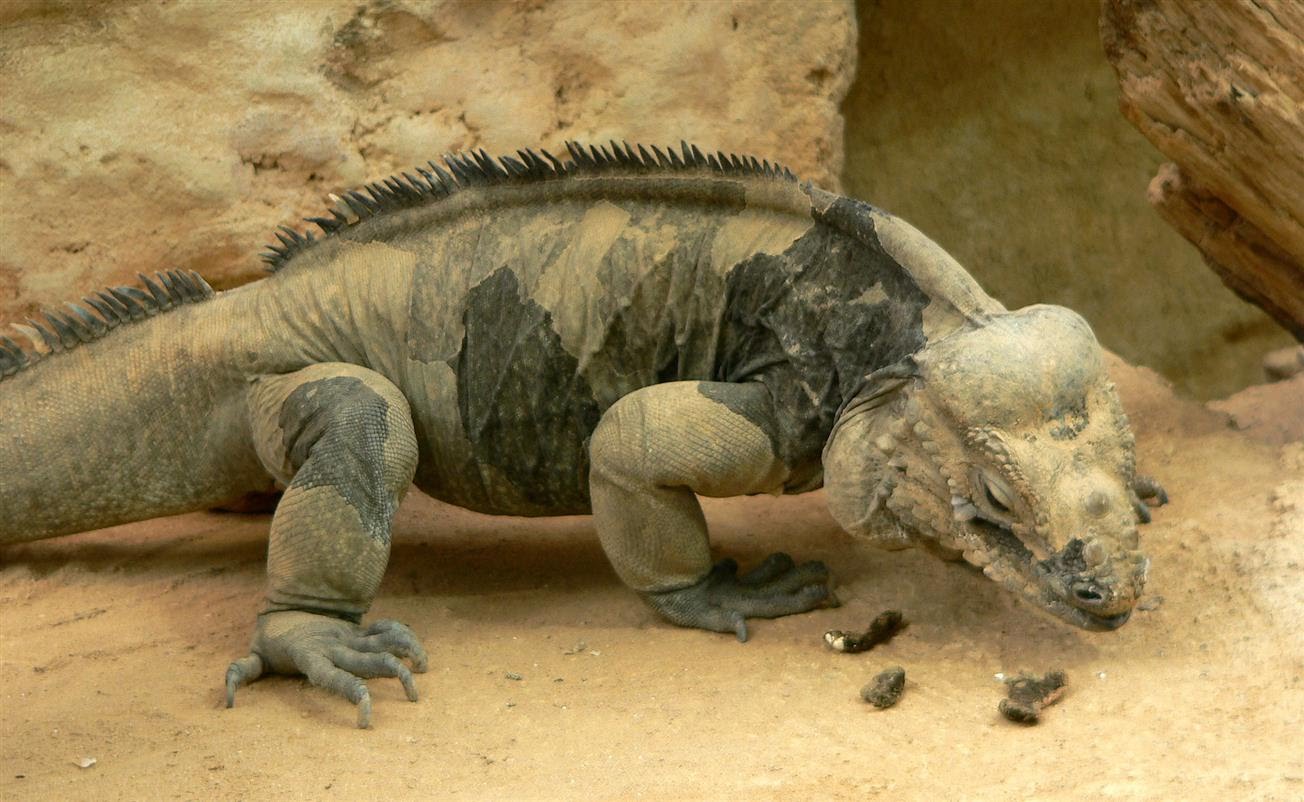
Just by looking at a sexually mature rhino iguana, it is easy to tell the difference between males and females.
#Adult rhino iguana for sale full
Like other iguana species, they have a very slow growth rate and can take 2-3 years or longer to reach their full size. Rhino iguanas can grow to be as large as 4.5 feet long and weigh from 10-20 lbs. Many people find rhino iguanas to be very prehistoric in appearance, with large bodies, a row of spines down their backs and part of their long tails, a triangular head, and long, massive claws. Their dull color helps them to easily blend in amongst rocky areas, leaf litter, and sandy areas. Rhino iguanas range in color from a dull brown to a murky green to steely gray, or a mix of the three. In addition to their “horns,” rhino iguanas also have a similar head shape and body color to their mammalian namesake.

Rhino iguanas have a horn-like protrusion on their noses, which is very similar to the horn of a rhinoceros. Looking at rhinoceros iguanas, it is very easy to see how they get their name.


They will also need a bowl large enough for them to soak their entire body, plenty of branches or other structures to climb on, and multiple heat lamps and UVB bulbs to properly bask and maintain high temperatures. Rhino iguanas do not need as high humidity levels as their cousin the green iguana, but still require about 60%-70% humidity. They need a substrate such as a coconut fiber or eco earth that will hold humidity well. They need an enclosure that is at least 8 feet in length and 5 feet tall, which gives this large species plenty of room to move around. Rhino iguanas require a large enclosure that you will likely have to build yourself or order from someone who builds custom enclosures. If you do decide that you want to purchase a rhino iguana, setting up the habitat correctly is key. Rhino iguanas are much less likely to bite you or strike you with their tails, but still use extreme caution. These are really the only two ways the iguana can defend itself from attackers.ĭespite such a scary arsenal, rhino iguanas are actually fairly docile compared to other iguana species, such as the green iguana. Iguanas have very sharp teeth and a powerful bite that can easily send you to the emergency room for stitches.

The iguana’s second primary defense mechanism is its bite. Being struck with the iguana’s tail can be very painful and can leave welts or bruises. When threatened, they may strike the threat repeatedly with their tails, using it almost like a whip. The rhino iguana’s tail, like the green iguana’s, is very thick and muscular. Because of this, only captive-bred rhino iguanas are legal to own.īefore purchasing your new iguana, it is crucial that you make sure that you are purchasing from a reputable breeder and are not purchasing an illegally collected wild iguana.Īlmost all species of iguanas possess the same two defense mechanisms: their bite and their tails. Rhino iguanas are listed as an endangered species on the IUCN red list, meaning that their populations are declining, and they are seriously at risk of becoming extinct. Rhino iguanas are usually a dull brown/green to blue/gray, helping them to blend in with their rocky, arid surroundings. The rhino iguana, discovered in 1789 by Pierre Joseph Bonnaterre, gets its name from the small protrusion on the nose of the males, which resembles a rhinoceros’s horn. The rhino iguana usually lives about 20 years in captivity or between 10 and 15 years in the wild. They belong to the Iguanidae family, which, as the name implies, is the iguana family. The rhino iguana, or Cyclura cornuta, is a species of iguana native to the Caribbean islands of Hispaniola, Haiti, and the Dominican Republic.


 0 kommentar(er)
0 kommentar(er)
